Every generation faces the solemn duty of honoring fallen soldiers who made the ultimate sacrifice in service to their country. From small-town memorials to national monuments, from school honor rolls to military base recognition walls, communities across America seek meaningful ways to preserve the memories of those who gave their lives defending freedom and protecting others.
Yet creating military recognition that truly honors sacrifice requires more than simply listing names on plaques. Effective memorials tell complete stories, educate younger generations about service and sacrifice, provide comfort to Gold Star families, and inspire continued appreciation for the freedoms service members protect. This comprehensive guide explores proven strategies for honoring fallen soldiers in ways that create lasting impact and preserve their legacy for generations to come.
Whether you’re planning a community veterans memorial, developing a military recognition program for your school, creating a display at your military base or veterans organization, or seeking to enhance existing recognition—this guide provides actionable frameworks for honoring fallen soldiers with the dignity and respect their sacrifice deserves.
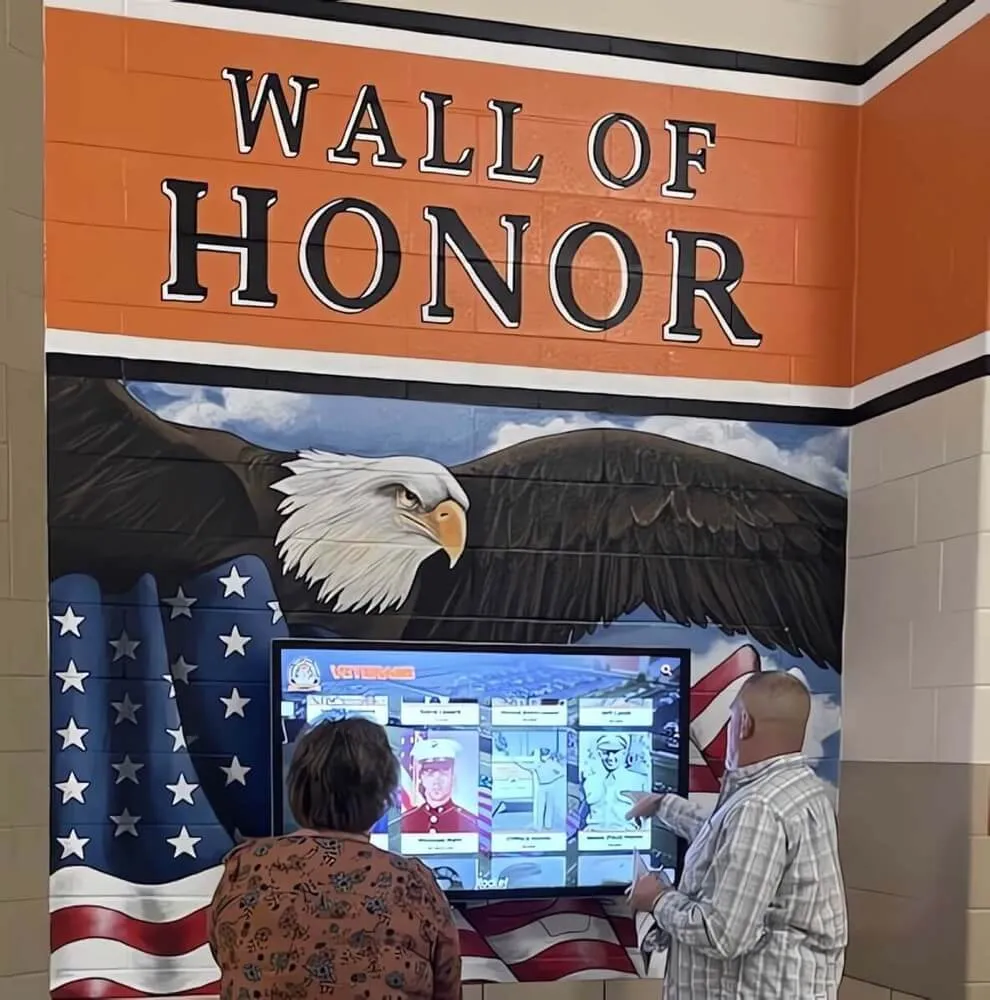
Memorial displays honoring fallen soldiers create powerful spaces for remembrance, education, and inspiration
Why Honoring Fallen Soldiers Matters to Communities
Before exploring specific memorial strategies, understanding the profound importance of military recognition helps communities approach this sacred responsibility with appropriate reverence and commitment.
Preserving Memory and Preventing Erasure
Time inevitably distances us from historical events and the individuals who shaped them. Without intentional preservation efforts, the stories of fallen soldiers fade from community memory within a generation:
The Memory Gap Challenge
- Service members who made ultimate sacrifices in conflicts from decades past become statistics rather than individuals
- Younger generations lack personal connections to veterans and may not understand the realities of military service
- Details about individual service members—their personalities, dreams, families, and communities—disappear without documentation
- The human cost of freedom becomes abstract rather than personal and tangible
Recognition as Historical Preservation
- Memorial displays document service members’ lives, creating permanent records for future research
- Families receive assurance that their loved ones’ sacrifices will be remembered beyond their lifetimes
- Communities maintain connections to their military heritage and history
- Educational institutions gain resources for teaching about service and sacrifice
According to the Defense POW/MIA Accounting Agency, over 81,000 Americans remain unaccounted for from past conflicts. Recognition programs that honor these missing service members alongside those whose remains were recovered ensure no one is forgotten, regardless of where they fell.
Supporting Gold Star Families
Gold Star families—those who have lost loved ones in military service—carry burdens most Americans will never experience. Thoughtful military recognition provides critical support to these families:
Emotional and Psychological Support
- Public acknowledgment validates families’ losses and sacrifices
- Visible memorials provide physical spaces for grief and remembrance
- Community recognition demonstrates that loved ones’ sacrifices are valued and remembered
- Shared commemoration helps families feel less isolated in their grief
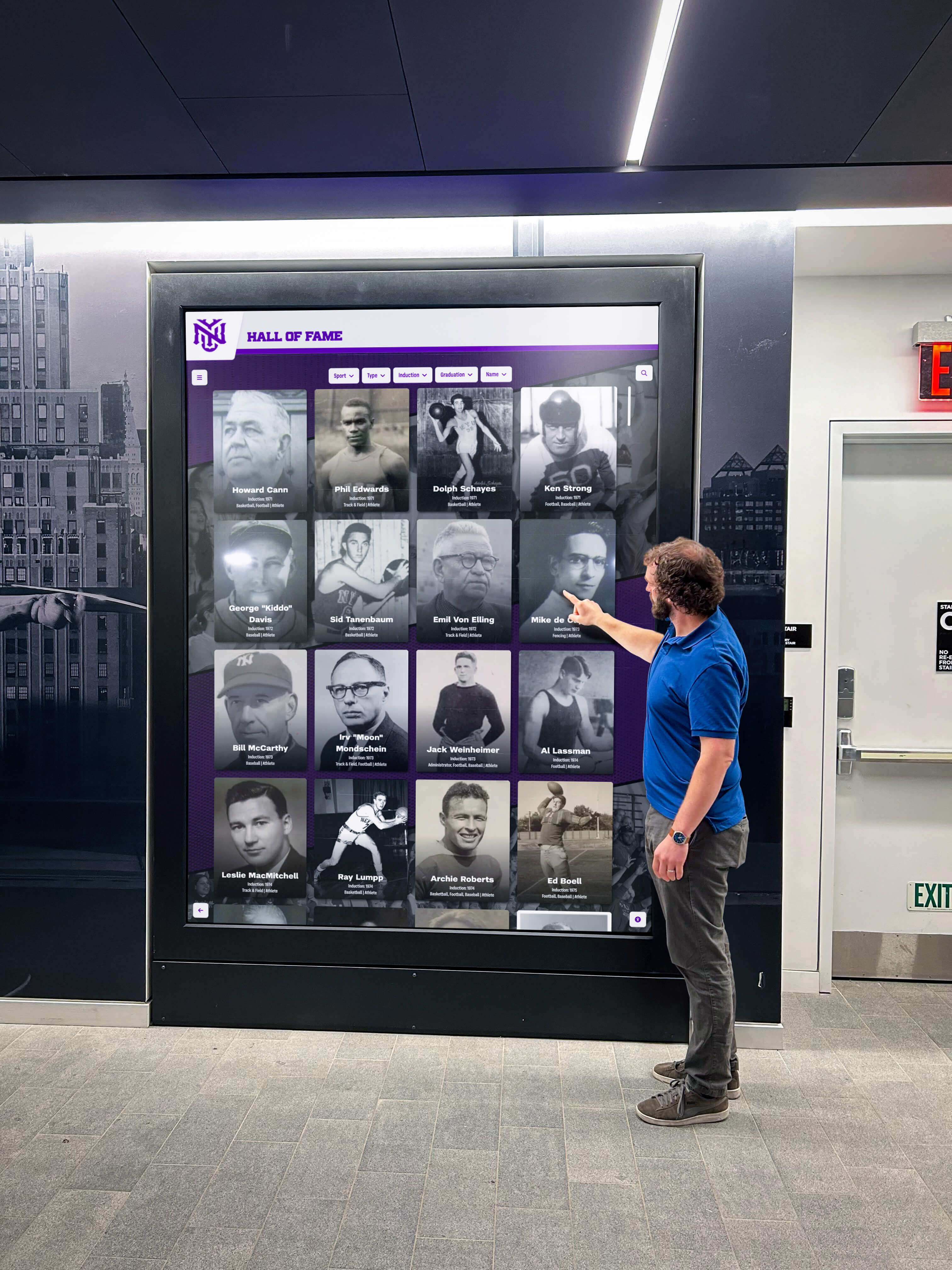
Interactive memorial displays allow families to explore comprehensive tributes to their fallen heroes
Long-Term Connection and Community
- Memorial events create ongoing connections between Gold Star families and their communities
- Recognition programs often facilitate relationships among families who have experienced similar losses
- Younger family members gain connections to parents or relatives they may never have met
- Communities demonstrate sustained commitment to honoring sacrifice beyond immediate aftermath
Educating Younger Generations
Military recognition serves critical educational functions, teaching younger Americans about service, sacrifice, and the costs of freedom:
Living History Lessons
- Memorial displays transform abstract concepts about military service into personal stories
- Students learn about historical conflicts through the lives of individuals from their own communities
- Recognition programs demonstrate that freedom isn’t free and requires ongoing protection
- Young people see concrete evidence that individual actions matter and can change history
Character Development Opportunities
- Stories of courage under fire inspire young people facing their own challenges
- Examples of service above self counter cultural messages about individualism and consumerism
- Military values like honor, duty, and sacrifice provide models for character development
- Recognition of diverse service members demonstrates that heroism comes in all forms
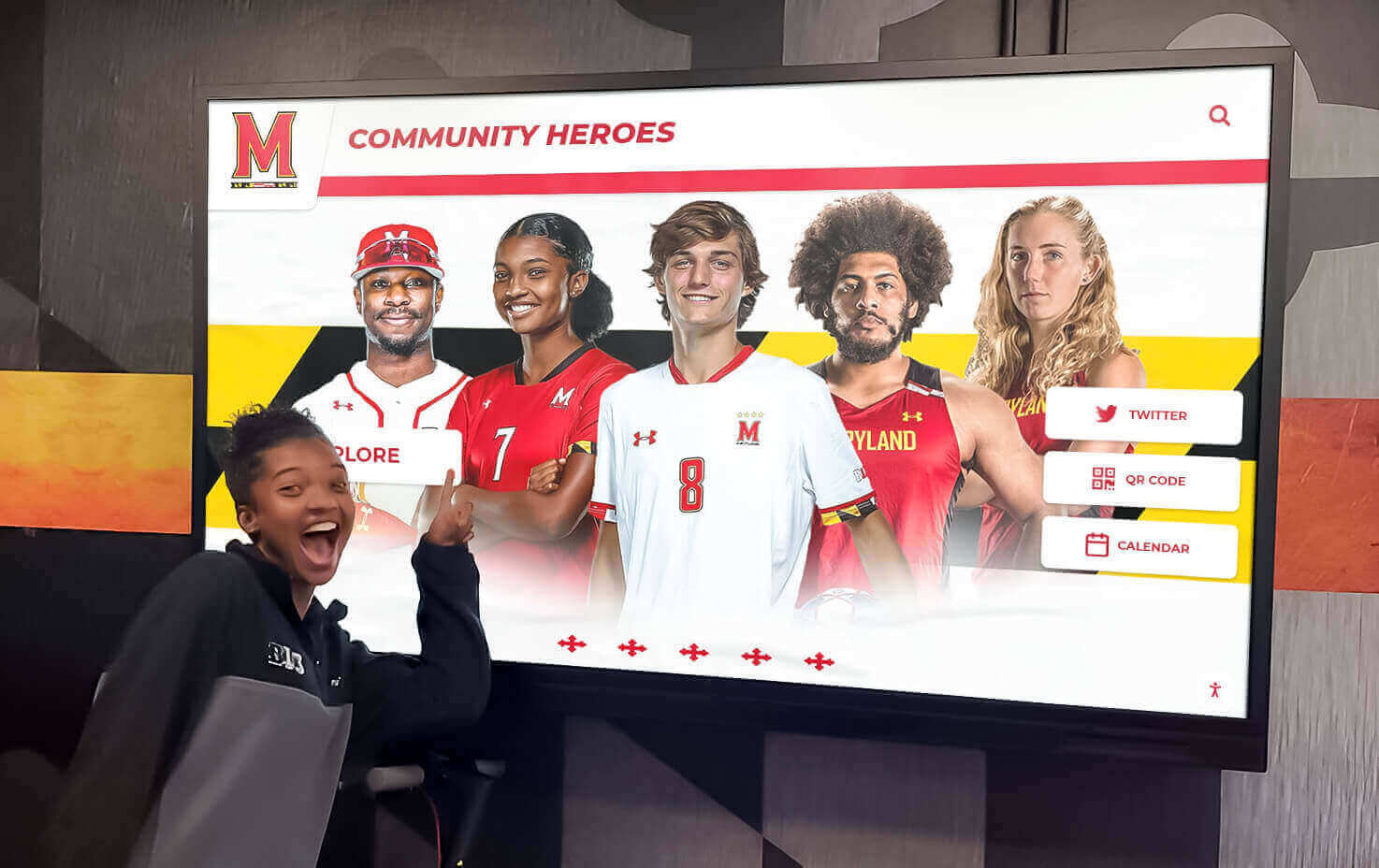
Students gain powerful educational experiences through interactive displays that tell complete stories about fallen heroes
Strengthening Civic Culture and Patriotism
Communities that honor fallen soldiers strengthen broader civic culture and shared national identity:
Building Social Cohesion
- Memorial events and recognition programs bring diverse community members together in shared purpose
- Honoring sacrifice transcends political divisions and reminds Americans of common values
- Military recognition creates intergenerational connections as veterans share experiences with younger citizens
- Shared appreciation for service members’ sacrifices strengthens community bonds
Sustaining Military Recruitment and Service
- Communities that honor military service encourage younger generations to consider service careers
- Recognition demonstrates that military contributions are valued and appreciated
- Gold Star families’ participation in recognition programs shows that service, while dangerous, creates lasting meaning
- Public appreciation makes active duty service members and their families feel supported
Traditional Approaches to Honoring Fallen Soldiers
Understanding traditional memorial methods provides context for appreciating both their strengths and limitations.
Physical Memorials and Monuments
Community memorial monuments represent the most visible form of military recognition:
Common Monument Types
- Engraved stone or granite memorials listing names of fallen service members
- Statues depicting soldiers, often in uniform or combat poses
- Memorial walls featuring plaques for individual service members
- Dedicated memorial parks or gardens with benches, walkways, and contemplation spaces
- Memorial flags and patriotic symbols integrated into public spaces
Strengths of Physical Memorials
- Permanent, highly visible community landmarks
- Powerful emotional impact through substantial physical presence
- Serve as natural gathering spaces for Memorial Day, Veterans Day, and other commemorations
- Weather-resistant materials ensure decades of durability
- Require minimal ongoing maintenance once installed
Limitations of Traditional Monuments
- Space constraints limit how many individuals can be recognized
- Difficult and expensive to add names as additional service members fall
- Provide minimal information beyond names and sometimes dates
- No ability to share photos, stories, or biographical details
- Static design cannot adapt to community needs or preferences
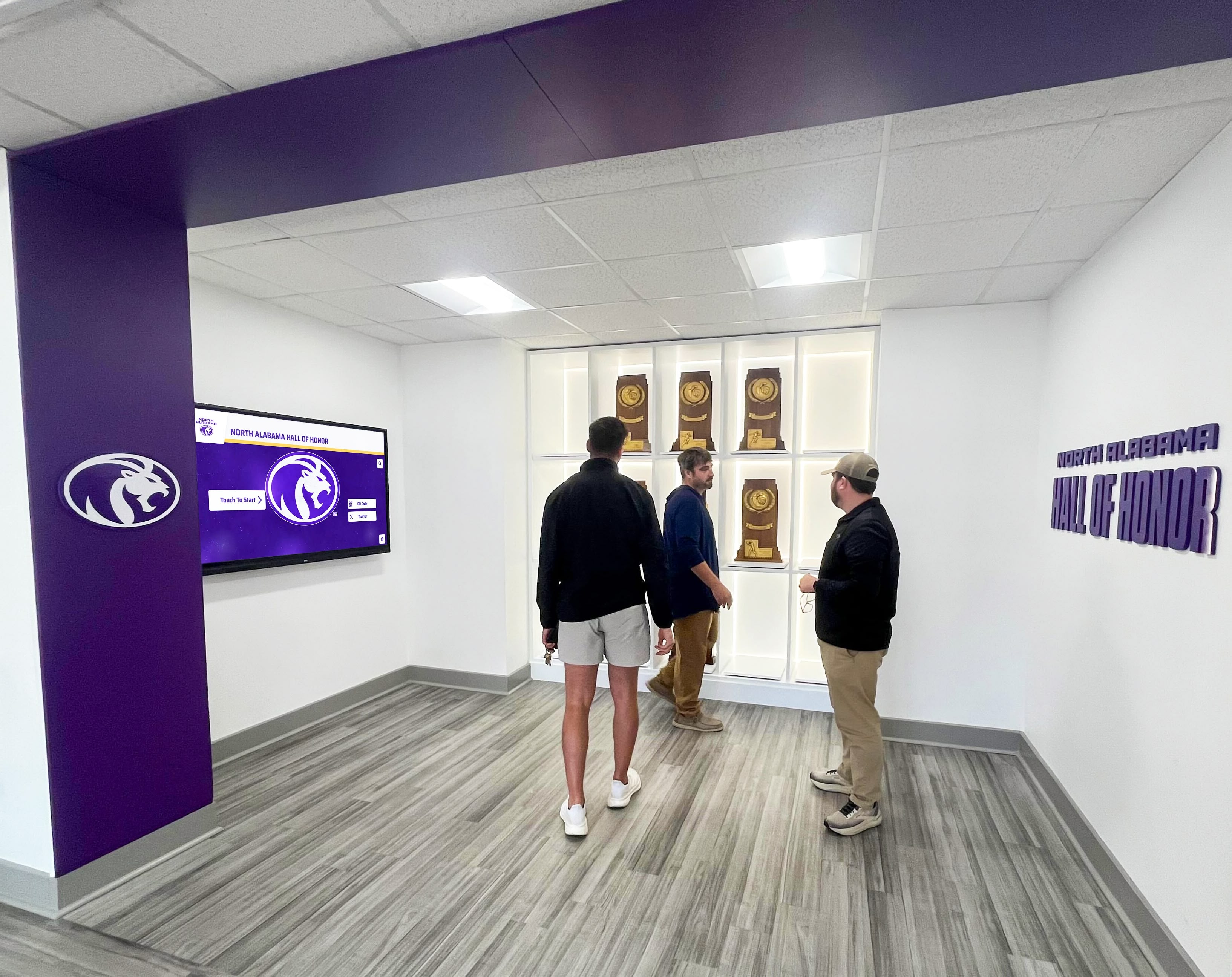
Traditional memorial spaces create powerful environments for honoring military service and sacrifice
Plaques and Recognition Walls
Many schools, military bases, and veterans organizations use plaque-based recognition systems:
Traditional Plaque Characteristics
- Individual plaques mounted on dedicated walls
- Typically include name, rank, branch, conflict, and dates of service/death
- Sometimes include photos, though these fade over time
- Grouped by conflict, branch, or chronologically
- Expensive to produce and install ($150-$400 per plaque)
Implementation Challenges
- Adding new plaques requires wall space that may not exist
- Inconsistent design as plaque styles change over decades
- Maintenance challenges as older plaques deteriorate or become damaged
- Limited information capacity constrains storytelling
- No mechanism for updating information or correcting errors
Annual Memorial Events and Ceremonies
Commemorative events provide opportunities for community remembrance:
Common Memorial Event Elements
- Memorial Day and Veterans Day observances with speakers and ceremonies
- Reading names of fallen service members
- 21-gun salutes and playing of Taps
- Wreath-laying ceremonies at memorials
- Participation by Gold Star families, veterans organizations, and military units
Event Benefits and Limitations
- Create powerful collective experiences of remembrance
- Bring communities together in shared purpose
- Provide comfort to Gold Star families through visible community support
- However, impact lasts only for the event duration
- Require substantial planning and coordination annually
- Difficult for distant family members or those with scheduling conflicts to attend
Modern Approaches to Military Memorial Recognition
Digital technology transforms military recognition, creating richer, more accessible memorial experiences.
Interactive Digital Memorial Displays
Digital recognition displays revolutionize how communities honor fallen soldiers:
Unlimited Capacity
- Digital systems accommodate hundreds or thousands of service members without physical space constraints
- Communities can honor all fallen soldiers, not just select individuals
- New service members can be added instantly without physical modifications
- Historical recognition gaps can be filled as research uncovers overlooked heroes
Comprehensive Storytelling
- Full biographical narratives explaining service members’ lives before, during, and impact after service
- Multiple photos showing service members with family, in uniform, during service, and commemorative images
- Video interviews with Gold Star family members sharing memories and stories
- Service records, commendations, and awards documentation
- Impact statements describing how their sacrifice benefited others
Search and Discovery Features
- Powerful search allowing visitors to find specific individuals by name
- Filter by conflict, branch, home community, or unit
- Related content connecting service members who served together
- Timeline views showing all service members from specific time periods
- Interactive maps showing where service members served and fell
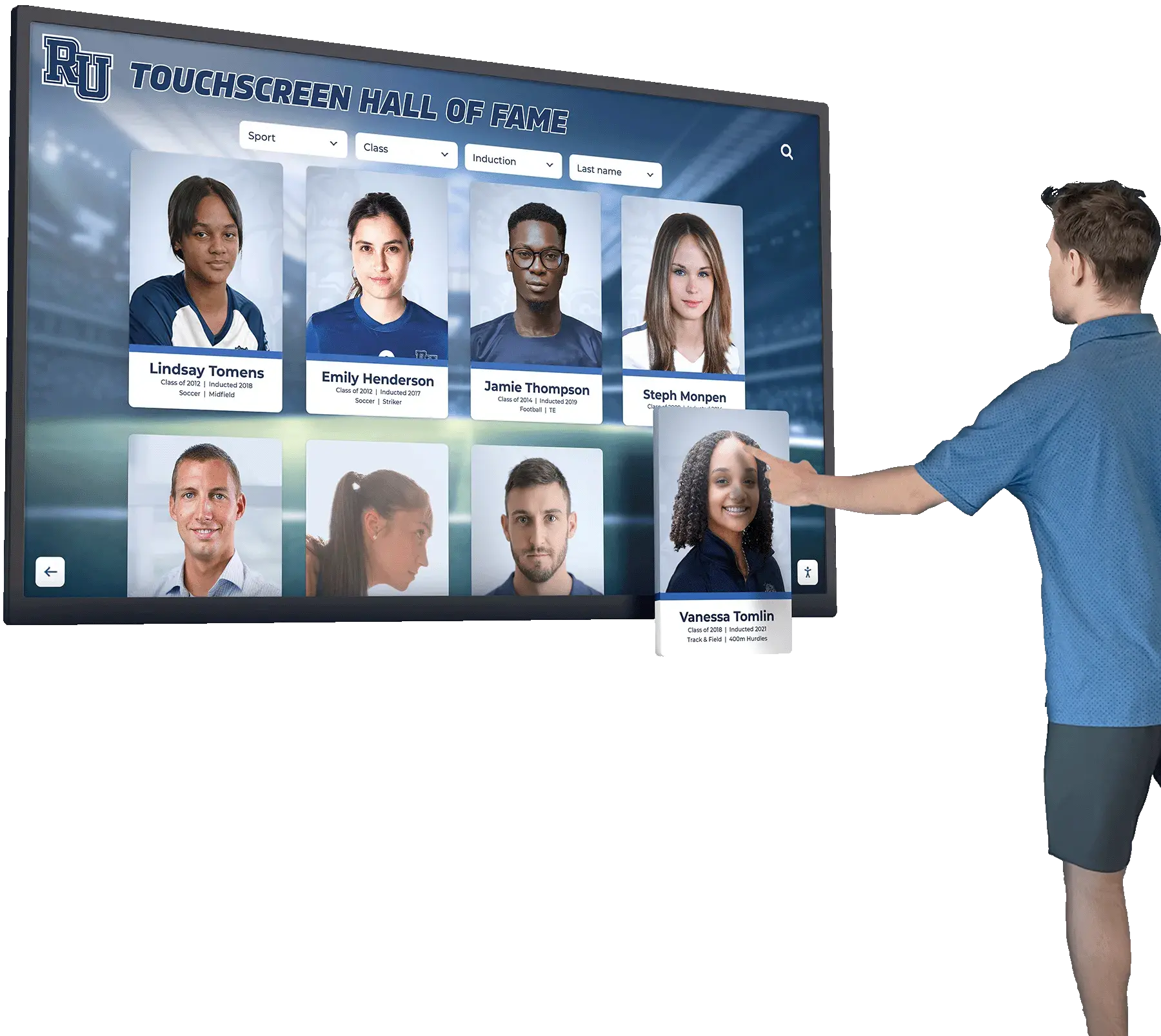
Interactive touchscreen displays enable deep exploration of fallen soldiers' complete life stories and service records
Solutions like Rocket Alumni Solutions specialize in military memorial displays that honor fallen soldiers with dignity and sophistication. These purpose-built platforms provide features specifically designed for military recognition rather than requiring awkward adaptation of generic display systems.
Web-Accessible Virtual Memorials
Digital memorial platforms extend recognition beyond physical locations:
Remote Access Benefits
- Distant family members can visit memorials anytime from anywhere
- Deployed service members can honor fallen comrades without physical presence
- Researchers can access information for historical projects or genealogy
- Students can study memorial content for educational assignments
- 24/7 availability unconstrained by weather, hours, or location
Enhanced Engagement Capabilities
- Social sharing allows families to share their fallen heroes’ profiles with networks
- Comment features enable visitors to share memories or express gratitude
- Update submissions allow families to contribute new information or corrections
- Integration with genealogy platforms helps families build comprehensive family histories
- Mobile optimization ensures memorials display properly on all devices
Accessibility Features
- Screen reader compatibility ensures visually impaired visitors can access content
- Translation capabilities serve non-English speaking family members
- Large text options assist those with vision difficulties
- Video captions serve hearing-impaired visitors
- Simplified navigation modes help those less comfortable with technology
Digital Memorial Walls in Physical Spaces
Combining digital capabilities with physical presence creates powerful memorial environments:
High-Traffic Placement Strategies
- School lobbies where students encounter memorials daily
- Military base entrances ensuring all personnel see recognition
- Veterans organization headquarters creating focal points for remembrance
- Municipal buildings demonstrating community commitment to honoring service
- Airport terminals in communities with strong military connections
Display Configuration Options
- Wall-mounted displays integrating with traditional memorial design elements
- Freestanding kiosks allowing flexible placement
- Video wall configurations creating immersive memorial experiences
- Multi-screen installations accommodating extensive content
- Outdoor-rated displays for exposed memorial locations
Physical Design Integration
- Patriotic design elements including flags, eagles, and military branch symbols
- Respectful color schemes reflecting memorial dignity
- Incorporation of eternal flames or symbolic lighting
- Integration with existing memorials and monuments
- Architectural elements creating dedicated memorial spaces
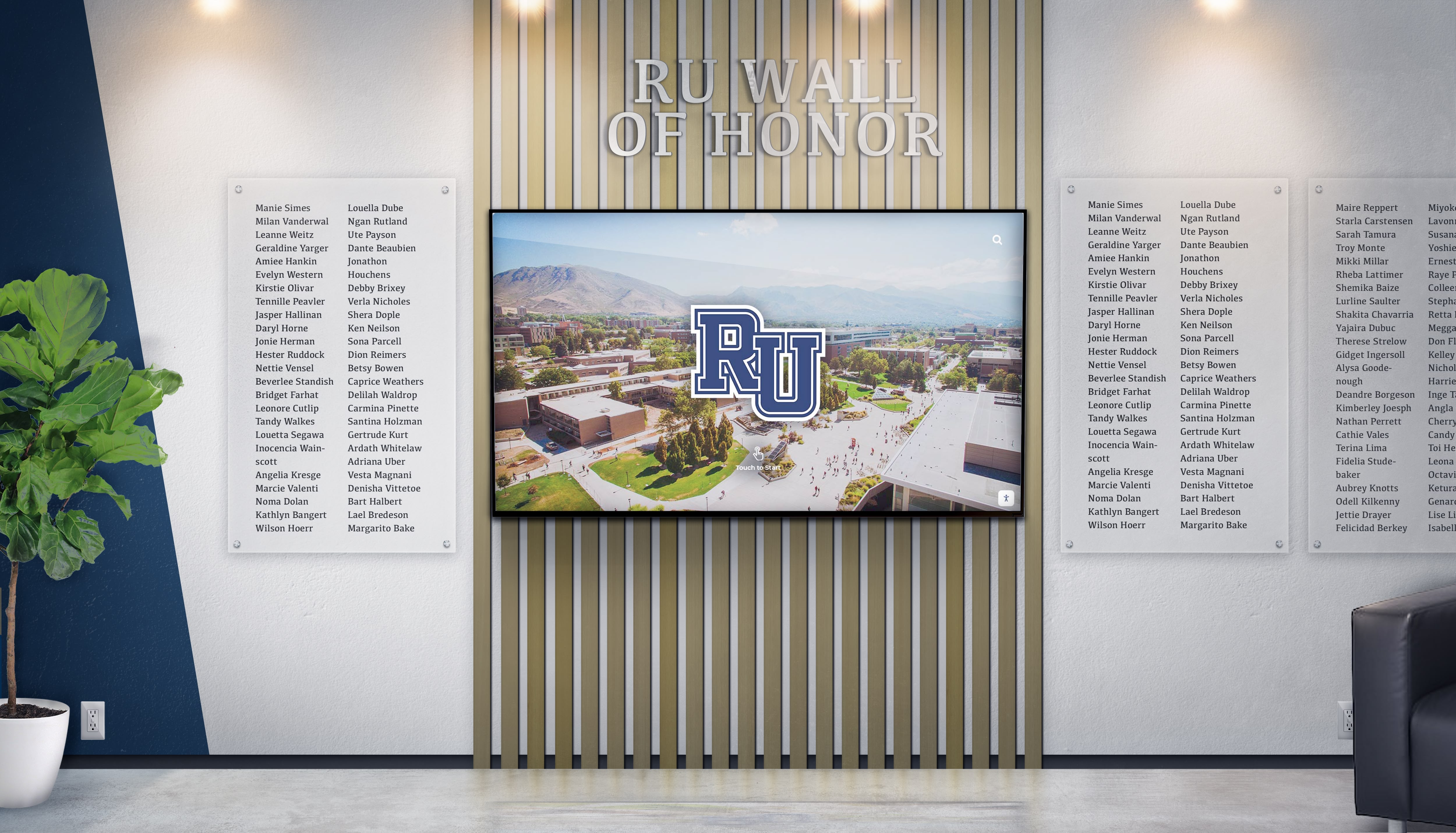
Modern memorial walls combine traditional design elements with interactive digital capabilities
Creating Comprehensive Military Recognition Programs
Effective memorial recognition requires systematic approaches addressing multiple dimensions of honoring fallen soldiers.
Content Development and Research
Building comprehensive memorial profiles requires dedicated research and content collection:
Military Service Documentation
- Official service records including enlistment dates, ranks, assignments, and discharge details
- Unit assignments and deployments
- Combat actions and engagements
- Commendations, medals, and awards received
- Training and specializations
Personal History Research
- Birth and family background information
- Education and pre-service employment
- Community involvement before military service
- Athletic, academic, or other achievements
- Religious affiliation and values
Service Circumstances Documentation
- Specific circumstances of death or injury leading to death
- Location and date of death
- Unit status and mission at time of death
- Accounts from fellow service members present
- Official casualty reports and notifications
Family and Legacy Information
- Gold Star family members (parents, spouses, children, siblings)
- Family statements about their loved one’s character and dreams
- Impact on family and community following death
- Memorial services and funeral details
- Posthumous recognitions or honors
Source Material Collection
- Military photographs in uniform
- Personal photos with family and friends
- Letters written home during service
- Personal effects, uniforms, or equipment
- Newspaper clippings about service or death
- Video footage if available
| Information Category | Primary Sources | Secondary Sources |
|---|---|---|
| Military Service Records | National Archives, DD-214 forms, unit records | Veterans organizations, military historians |
| Personal History | Family members, personal papers, yearbooks | Local newspapers, school archives, church records |
| Circumstances of Death | Military casualty reports, unit after-action reports | Fellow service members, military historians |
| Photos and Documents | Family collections, personal effects | Newspaper archives, veterans organizations |
| Legacy and Impact | Gold Star family interviews | Community members, memorial dedications |
Working Respectfully with Gold Star Families
Family engagement represents the most sensitive and important aspect of military recognition programs:
Initial Outreach Approaches
- Personal communication rather than mass emails or form letters
- Clear explanation of memorial project goals and scope
- Respect for families not ready or willing to participate
- Flexibility about level and type of participation families prefer
- Transparency about where and how information will be displayed
Family Participation Options
- In-person or phone interviews sharing memories and stories
- Written submissions families prepare at their own pace
- Photo and document contributions from family collections
- Video testimonials for families comfortable being recorded
- Participation in memorial events and dedications
- Ongoing involvement in content updates and corrections
Sensitivity and Respect Protocols
- Acknowledge the profound grief families continue to experience
- Avoid assumptions about what families want or how they feel
- Provide time for families to process requests and respond
- Respect decisions about which information should or shouldn’t be shared
- Use proper military terminology and rank designations
- Review all content with families before publication
- Honor families’ preferences about privacy and public visibility
Long-Term Family Relationships
- Maintain contact beyond initial memorial creation
- Invite families to memorial events and dedications
- Share engagement metrics showing how many people view their loved one’s memorial
- Facilitate connections between families of service members who served together
- Provide regular updates about memorial program developments
- Create opportunities for families to share newly discovered photos or information
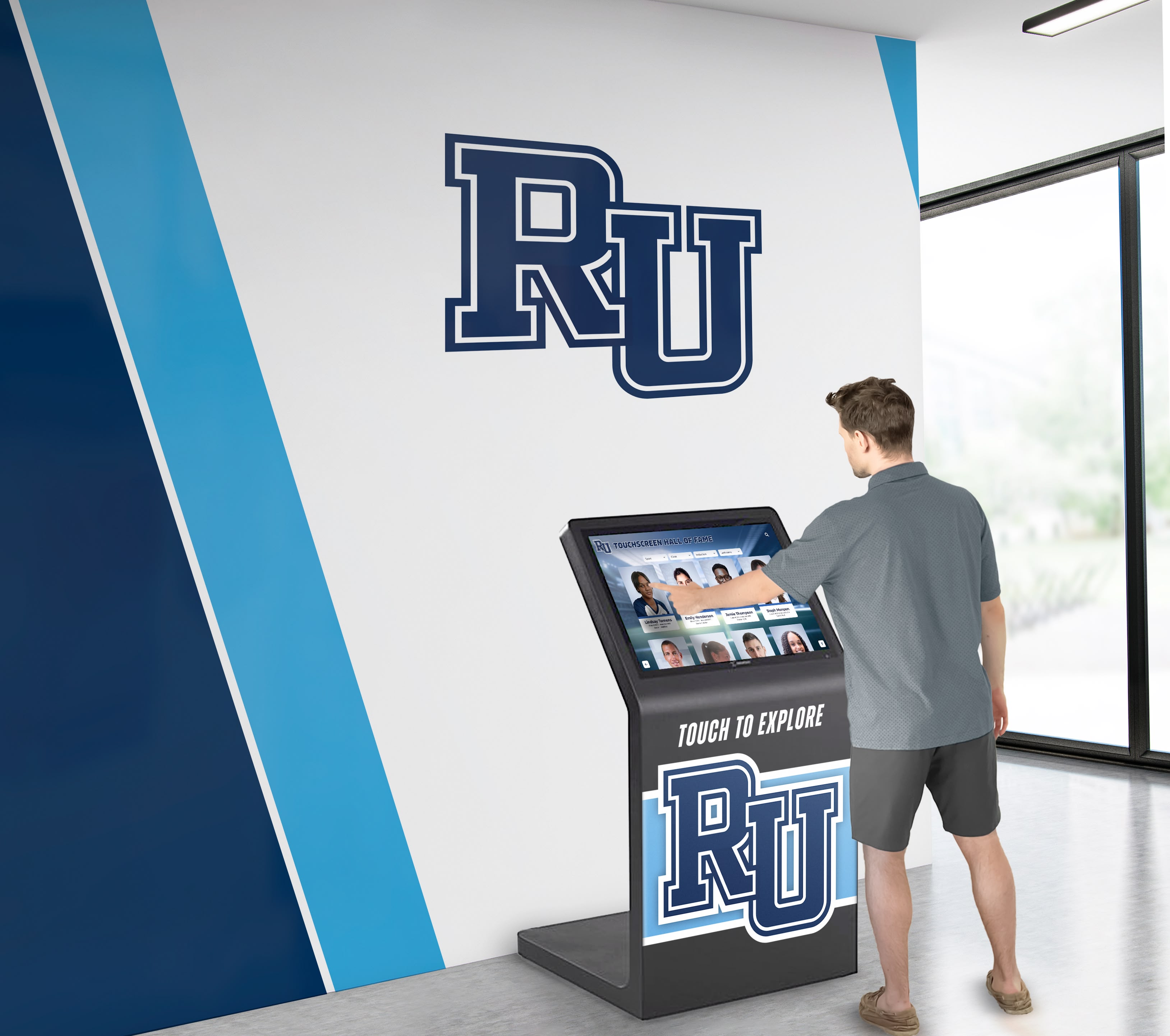
Accessible memorial displays in high-traffic areas ensure fallen soldiers receive daily recognition and appreciation
Organizing Recognition by Conflict and Era
Thoughtful organizational structures help visitors navigate military recognition content:
Conflict-Based Organization
- Revolutionary War through War of 1812
- Civil War recognition (Union and Confederate where appropriate)
- Spanish-American War and Philippine Insurrection
- World War I (The Great War)
- World War II (European and Pacific Theaters)
- Korean War
- Vietnam War
- Gulf War (Operation Desert Storm)
- Global War on Terror (Afghanistan, Iraq, and other operations)
- Other conflicts and peacetime service deaths
Branch of Service Organization
- U.S. Army and Army Air Corps/Air Force
- U.S. Navy
- U.S. Marine Corps
- U.S. Coast Guard
- Merchant Marine
- National Guard and Reserve Components
Chronological Organization
- By year or decade of death
- Helpful for communities with extensive military history
- Allows visitors to see service patterns over time
- Demonstrates community’s sustained military contribution
Unit-Based Organization
- Service members organized by units where they served
- Particularly relevant for communities with strong connections to specific units
- Helps veterans find information about fellow unit members
- Preserves unit history and traditions
Educational Programming Integration
Military memorials serve as foundations for broader educational initiatives:
School Curriculum Integration
- History lessons using local fallen soldiers as primary sources
- English assignments writing essays about service members’ lives
- Social studies projects researching specific conflicts
- Art projects creating memorial-inspired works
- Genealogy lessons helping students research military ancestors
Memorial Day and Veterans Day Activities
- Student research presentations about fallen soldiers
- Essay or poetry competitions on themes of service and sacrifice
- Memorial ceremony participation by student groups
- Visiting veterans discussing service and sacrifice with students
- Recognition of students with family military connections
Veterans Interview Projects
- Oral history programs recording living veterans’ memories
- Video documentation of veteran perspectives
- Student-veteran mentorship programs
- Recognition of veterans who served with fallen soldiers
- Preservation of first-hand accounts for future generations
Community Education Events
- Guest speakers discussing military history and service
- Documentary screenings about specific conflicts
- Panel discussions with Gold Star families
- Exhibits featuring artifacts, uniforms, and memorabilia
- Genealogy workshops helping families research military service
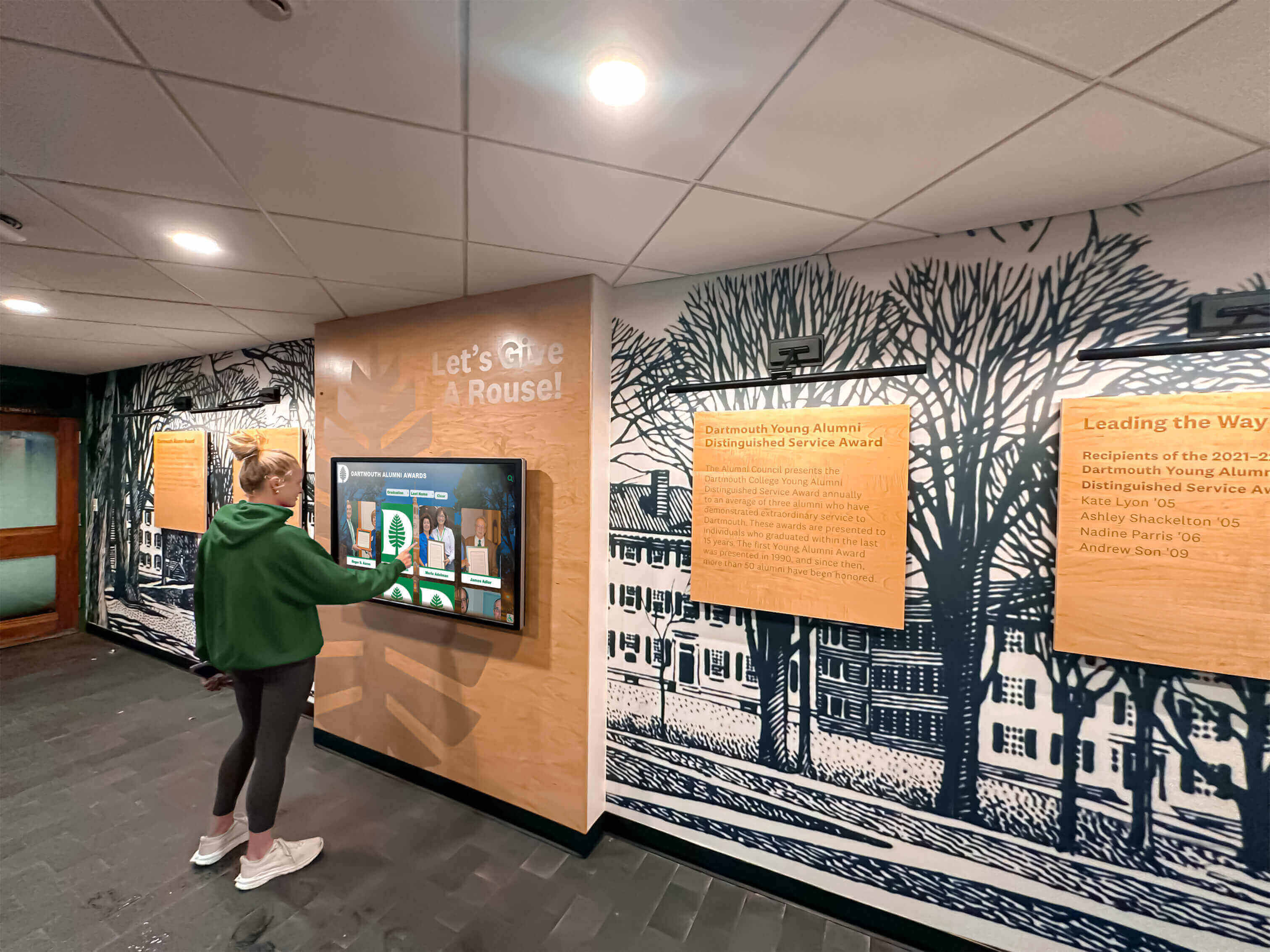
School-based military memorials create daily educational opportunities for students learning about service and sacrifice
Implementation Planning for Military Memorial Projects
Successfully creating memorial recognition requires systematic project planning and execution.
Establishing Memorial Committees and Leadership
Memorial projects benefit from diverse leadership bringing multiple perspectives:
Committee Composition
- Gold Star family representatives ensuring family perspectives guide decisions
- Veterans from various conflicts and service branches
- Community leaders including elected officials and civic organization leaders
- Educational institution representatives for school-based memorials
- Military base leadership for installation memorials
- Veterans organization representatives (American Legion, VFW, DAV, etc.)
- Historical society or archives representatives
- Fundraising and development professionals
- Technology specialists for digital memorial components
Committee Responsibilities
- Establishing memorial goals, scope, and eligibility criteria
- Researching fallen soldiers and collecting biographical information
- Coordinating with Gold Star families
- Fundraising and resource development
- Selecting memorial design and technology platforms
- Content development and review
- Planning dedication ceremonies and ongoing memorial events
- Long-term maintenance and updating
Funding and Resource Development
Memorial projects require sustainable funding approaches:
Initial Capital Funding Sources
- Individual community donations from residents and businesses
- Veterans organization grants (American Legion, VFW, etc.)
- State and federal grants for veterans memorials
- Corporate sponsorships from businesses with military connections
- Fundraising events including dinners, auctions, and commemorative sales
- Municipal appropriations from government budgets
- Foundation grants focused on military or community projects
Fundraising Campaign Strategies
- Tiered giving levels with appropriate recognition
- Memorial dedication opportunities for major donors
- Brick or paver programs allowing many small contributions
- Legacy giving programs for planned gifts
- Corporate matching gift programs
- Crowdfunding campaigns for specific project elements
- Commemorative merchandise sales (challenge coins, prints, books)
Operating Budget Development
- Annual hosting and maintenance costs for digital systems
- Content development and update expenses
- Memorial event planning and execution
- Marketing and promotion expenses
- Supplies and materials for physical memorial elements
- Professional services (research, photography, videography)
- Insurance and security costs
Timeline Development and Project Phases
Realistic timeline planning prevents rushed work and ensures quality:
Phase 1: Planning and Design (3-6 months)
- Committee formation and goal establishment
- Memorial scope definition and eligibility criteria
- Location selection and site assessment
- Technology platform evaluation and selection
- Initial fundraising and budget development
- Design concept development
Phase 2: Research and Content Collection (6-12 months)
- Fallen soldier identification and verification
- Military service records research
- Gold Star family outreach and interviews
- Photo and document collection
- Biographical content writing
- Historical research and verification
Phase 3: Development and Production (3-6 months)
- Digital platform configuration and customization
- Content upload and organization
- Physical memorial element production
- Installation coordination and scheduling
- Staff and volunteer training
- Testing and quality assurance
Phase 4: Launch and Dedication (1-2 months)
- Soft launch and final testing
- Dedication ceremony planning
- Marketing and promotional campaign
- Media relations and press coverage
- Official dedication ceremony
- Community celebration and recognition
Phase 5: Ongoing Operation and Enhancement (Continuous)
- Regular content updates and additions
- Annual memorial events
- Educational program integration
- Engagement monitoring and optimization
- Long-term maintenance and technical support
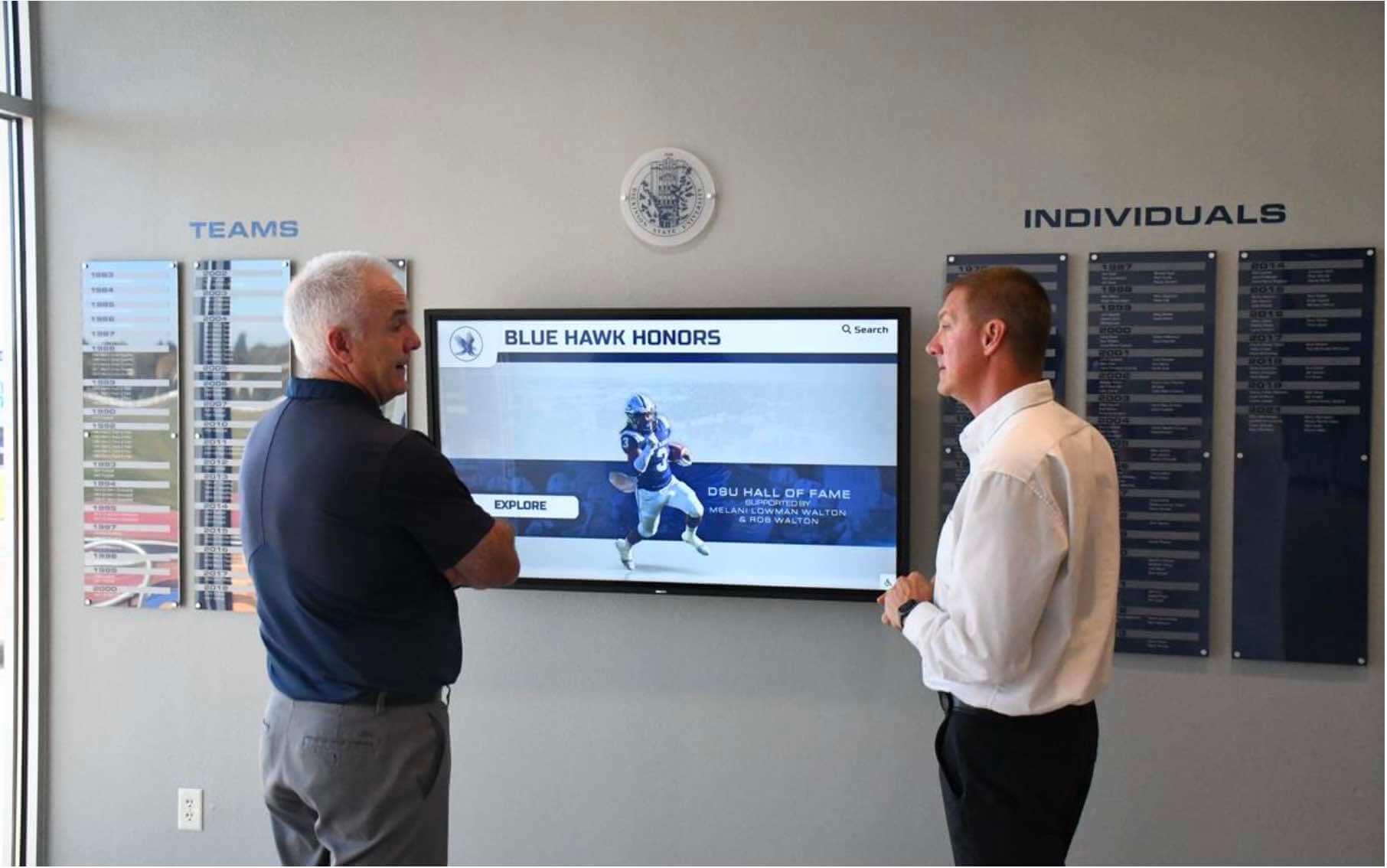
Community members engage with interactive memorial displays that preserve and share stories of fallen heroes
Technology Selection for Digital Military Memorials
Choosing appropriate technology platforms significantly impacts memorial effectiveness and longevity.
Evaluating Digital Memorial Platforms
Multiple factors influence technology selection decisions:
Essential Platform Features
- Purpose-built for memorial and recognition rather than generic website tools
- Military-specific templates and design elements
- Unlimited capacity accommodating growing content
- Powerful search and filtering capabilities
- Multimedia support (photos, videos, documents, audio)
- Mobile-responsive design working on all devices
- Cloud-based hosting eliminating institutional server requirements
- Intuitive content management requiring no coding knowledge
- Security features protecting sensitive information
- Analytics tracking visitor engagement
Military Recognition Specialization
- Service branch identification and filtering
- Rank and unit designation fields
- Conflict and era categorization
- Commendation and award documentation
- Gold Star family sections
- Related service member connections
- Map-based location features
- Timeline visualization tools
Long-Term Considerations
- Vendor stability and track record
- Platform update and enhancement roadmap
- Migration capabilities if future platform changes needed
- Total cost of ownership (initial + annual ongoing costs)
- Support and training availability
- Integration capabilities with other systems
- Scalability for future expansion
- Accessibility compliance (ADA, WCAG standards)
Hardware Selection for Physical Displays
Display hardware quality significantly impacts visitor experience and system reliability:
Display Specifications
- Commercial-grade touchscreens rated for continuous operation
- Screen sizes appropriate for viewing distances (43"-86" depending on space)
- High-resolution displays ensuring clarity and readability (minimum 1080p, preferably 4K)
- Commercial-grade capacitive touch providing smartphone-like responsiveness
- Tempered glass protection preventing damage
- Anti-glare coatings for well-lit environments
- Wide viewing angles supporting multiple simultaneous viewers
Mounting and Installation Options
- Wall-mounted displays integrating with memorial walls
- Freestanding kiosks providing flexibility
- Outdoor-rated enclosures for exterior installations
- ADA-compliant mounting heights and approach spaces
- Secure fastening preventing theft or vandalism
- Professional cable management
- Adequate lighting without screen glare
Support Infrastructure
- Reliable network connectivity (Ethernet or Wi-Fi)
- Adequate power supply and surge protection
- Remote management capabilities
- Content update and software update support
- Technical support and warranty coverage
- Replacement parts availability
- Maintenance and cleaning procedures
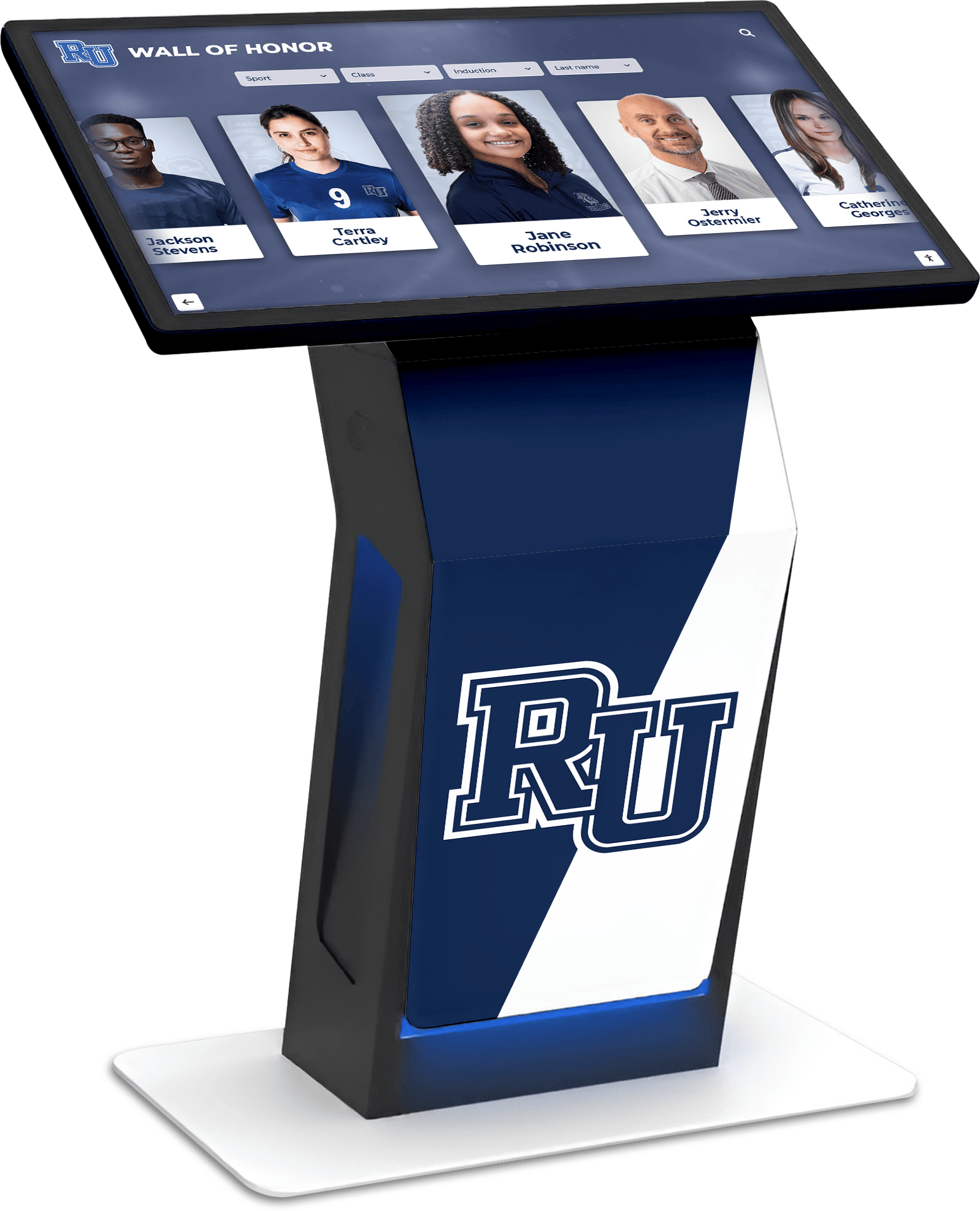
Professional memorial kiosks combine dignified design with advanced interactive capabilities
Memorial Events and Ongoing Recognition
Living memorial programs require ongoing engagement beyond initial dedication.
Annual Memorial Day Observances
Memorial Day provides the primary annual opportunity for community remembrance:
Traditional Ceremony Elements
- Opening invocation or prayer
- Presentation of colors by military honor guard
- National anthem performance
- Pledge of Allegiance
- Reading of fallen service members’ names
- Guest speakers (elected officials, military leaders, Gold Star families)
- Wreath-laying ceremony
- 21-gun salute
- Playing of Taps
- Closing remarks and benediction
Enhanced Digital Integration
- Video tributes featuring fallen soldiers’ photos and service details
- Live streaming for distant attendees
- Social media integration encouraging online participation
- Interactive memorial display demonstrations
- Photo opportunities at memorial displays
- Commemorative programs with QR codes linking to digital memorials
Family Involvement
- Reserved seating for Gold Star families
- Recognition of families in attendance
- Opportunities for families to share memories if willing
- Memorial wreaths placed by family members
- Commemorative flags or flowers for families
- Private family time at memorial before or after public ceremony
Veterans Day and Other Military Observances
Additional recognition opportunities throughout the year:
Veterans Day (November 11)
- Recognition of living veterans alongside fallen soldiers
- Educational programs in schools about military service
- Community parades featuring veterans organizations
- Special memorial display features highlighting veterans’ stories
- Veteran-student mentorship program launches
Armed Forces Day (Third Saturday in May)
- Recognition of all branches of military service
- Active duty service member participation
- Military equipment displays and demonstrations
- Career information for those considering military service
- Memorial features highlighting specific service branches
POW/MIA Recognition Day (Third Friday in September)
- Special recognition of missing service members
- Empty chair or table symbolism
- Education about ongoing accounting efforts
- Family support and remembrance activities
Pearl Harbor Remembrance Day (December 7)
- Recognition of service members lost in Pearl Harbor attack
- World War II veteran recognition and education
- Historical programming about the attack and its aftermath
D-Day Anniversary (June 6)
- Recognition of service members lost in Normandy invasion
- European Theater World War II focus
- Liberation themes and freedom preservation
Ongoing Community Engagement
Sustaining memorial relevance requires continuous engagement:
Regular Content Updates
- Addition of newly fallen service members
- Enhancement of existing profiles with newly discovered information
- Correction of errors or inaccuracies as identified
- Seasonal features highlighting relevant service members
- Anniversary recognitions (death anniversaries, birthday remembrances)
Educational Outreach
- School visits introducing students to memorial resources
- Research assistance for students and genealogists
- Veterans organization program support
- Community presentation about memorial project and stories
- Training for volunteers and docents
Family Communication
- Annual updates to Gold Star families about memorial activities
- Invitations to special events and dedications
- Notification when family members view memorial content
- Opportunities to provide content updates
- Birthday or anniversary remembrance notes
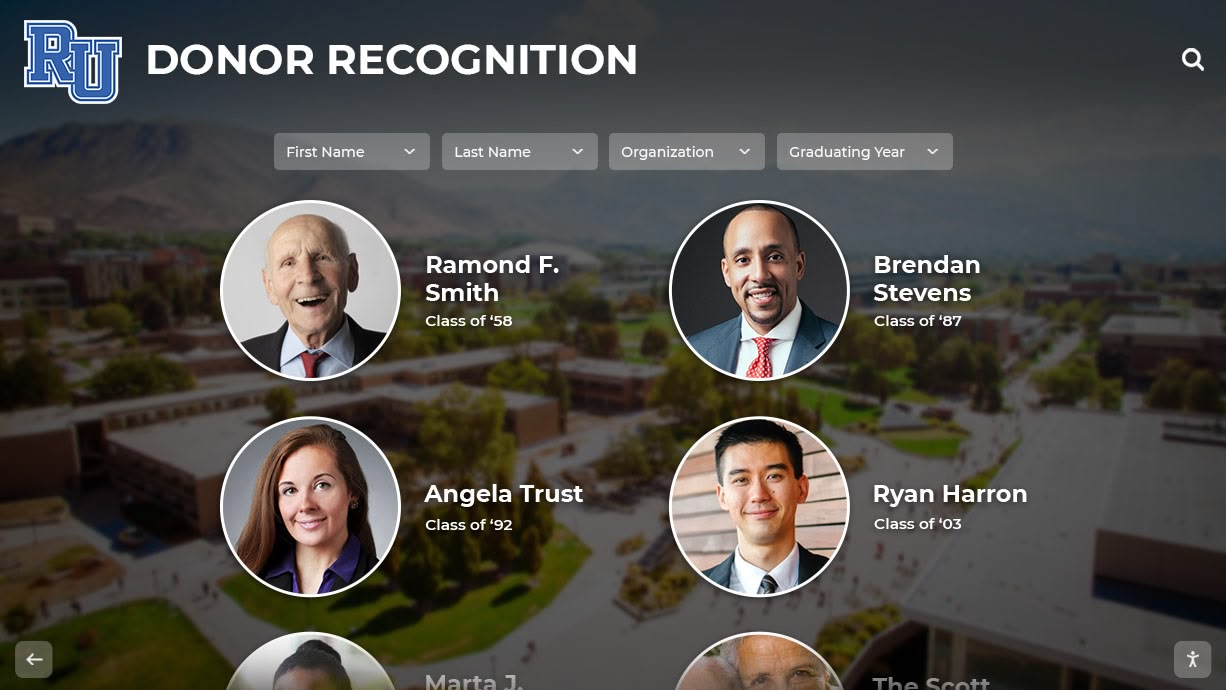
Memorial displays create lasting tributes that honor sacrifice while inspiring future generations
Measuring Memorial Impact and Success
Evaluating memorial programs ensures they achieve intended goals and serve communities effectively.
Quantitative Impact Metrics
Track measurable indicators demonstrating memorial value:
Visitor Engagement Metrics
- Number of unique visitors to digital memorials
- Average session duration indicating depth of engagement
- Pages viewed per session showing exploration breadth
- Return visitor rates demonstrating sustained interest
- Search queries revealing what visitors seek
- Video view counts and completion rates
- Social sharing and outreach metrics
Educational Impact Indicators
- Number of students participating in memorial-based lessons
- Research projects using memorial content
- School group visits to physical memorials
- Teacher resource utilization rates
- Student survey responses about learning outcomes
Community Participation
- Memorial event attendance
- Gold Star family participation rates
- Volunteer involvement in memorial activities
- Donations and ongoing financial support
- Media coverage and awareness metrics
Content Development Metrics
- Number of fallen soldiers honored
- Completeness of profiles (photos, videos, biographical details)
- Family participation rates in content contribution
- Historical gaps filled through research
- New information additions over time
Qualitative Assessment
Non-numerical evaluation provides crucial insights:
Stakeholder Feedback
- Gold Star family testimonials about memorial meaning
- Veteran responses to memorial recognition
- Student reflections on what they learned
- Community member observations about memorial impact
- Teacher feedback on educational value
- Volunteer perspectives on participation experience
Story Collection
- Accounts of families discovering information about loved ones
- Students describing how memorial changed their perspectives
- Veterans sharing how memorial helps them honor fallen comrades
- Community members explaining memorial’s personal significance
- Examples of connections formed through memorial experiences
Behavioral Observations
- Time visitors spend at physical memorial displays
- Emotional responses during memorial events
- Repeat visitor patterns indicating sustained engagement
- Family member return visits on anniversaries or special occasions
- Student engagement depth during educational programs
Best Practices for Honoring Fallen Soldiers
Proven strategies ensure military recognition programs honor service members with appropriate dignity and effectiveness.
Authenticity and Historical Accuracy
Maintaining rigorous accuracy standards protects memorial integrity:
Research Verification Processes
- Multiple source confirmation for all biographical facts
- Official military records as primary sources
- Family verification of personal information
- Cross-reference checking against reliable databases
- Documentation of uncertain or conflicting information
- Clear attribution of information sources
Correction and Update Protocols
- Mechanisms for families and researchers to submit corrections
- Review processes for evaluating suggested changes
- Transparent communication about updates and corrections
- Version history tracking changes over time
- Acknowledgment of limitations and information gaps
Inclusive Recognition
Ensuring all fallen soldiers receive appropriate honor:
Comprehensive Inclusion Criteria
- All service members who died in military service, regardless of circumstances
- Combat deaths and non-combat deaths
- All conflicts from Revolutionary War through present
- All service branches and reserve components
- Service members from all backgrounds and demographics
- Previously overlooked or underrecognized service members
Equity in Recognition Depth
- Comparable profile length and detail across all service members
- Equal prominence regardless of rank or commendations
- Photos and multimedia for all service members when available
- Proactive research for service members with limited available information
- Historical research filling gaps for older conflicts
Dignity and Respect
Maintaining appropriate tone and presentation:
Content Tone Guidelines
- Respectful, dignified language throughout
- Avoid graphic descriptions of death circumstances
- Focus on life, service, and legacy rather than only death
- Appropriate military terminology and rank designations
- Sensitivity to ongoing family grief
- Balance between honoring sacrifice and celebrating life lived
Visual Presentation Standards
- Professional, high-quality photos
- Tasteful design elements reflecting memorial solemnity
- Patriotic symbolism without excessive commercialization
- Readable fonts and accessible layouts
- Consistent formatting across all profiles
- Appropriate color schemes and design elements
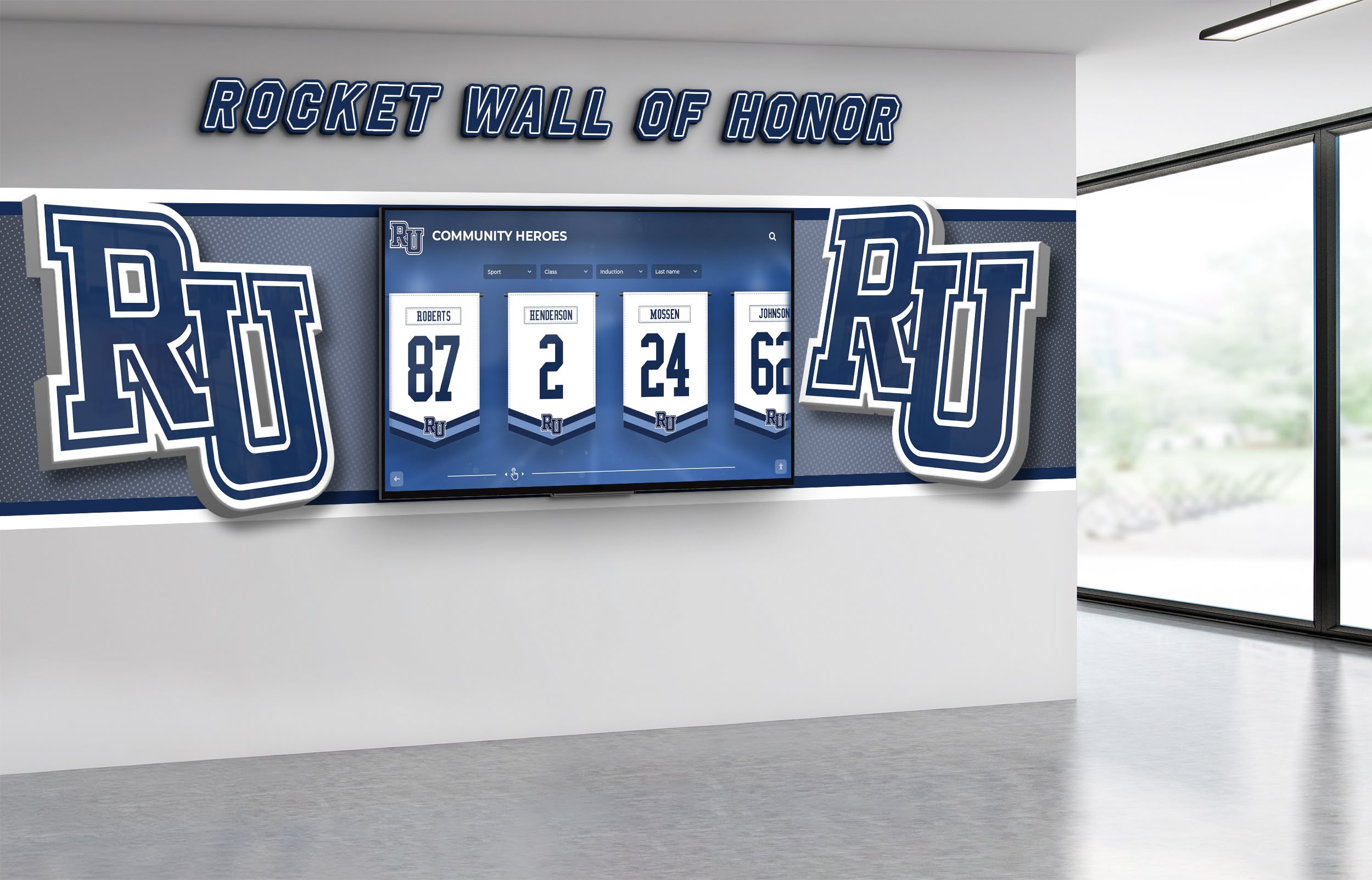
Professional memorial installations honor fallen soldiers while integrating seamlessly into community spaces
School-Based Military Memorial Programs
Educational institutions play special roles in preserving military memory for younger generations.
School District Memorial Planning
District-level coordination ensures consistency and resource efficiency:
Multi-School Coordination
- District-wide fallen soldier database including all community service members
- Shared research and content development
- Consistent recognition criteria across schools
- Cost savings through shared technology platforms
- Unified annual memorial events
- Collaborative educational programming
Age-Appropriate Content
- Elementary school content emphasizing basic concepts of service and sacrifice
- Middle school material introducing more detailed historical context
- High school resources supporting deeper research and analysis
- Graduate level resources for university memorial programs
Student Participation and Leadership
Student involvement creates powerful learning experiences:
Student Research Projects
- Individual or small group research assignments about specific fallen soldiers
- Oral history projects interviewing family members or fellow veterans
- Creative projects (art, music, writing) inspired by service members’ stories
- Technology projects developing memorial content or features
- Service learning projects maintaining memorials or organizing events
Student Leadership Opportunities
- Student memorial committee membership
- Event planning and execution for memorial ceremonies
- Peer education presentations to younger students
- Tour guide training for visitor groups
- Social media content creation and management
- Family liaison assistance connecting with Gold Star families

School memorials connect students to their community's military heritage and sacrifice
Military Base and Veterans Organization Memorials
Military communities have unique memorial needs and opportunities.
Installation Memorial Programs
Military bases maintain sophisticated recognition systems:
Installation-Specific Considerations
- Recognition of all installation personnel killed in action
- Unit-based organization reflecting military structure
- Integration with base historical programs
- Coordination with military protocol and traditions
- Security considerations for access and content
- Support for transitioning Gold Star families
Unit Memorial Integration
- Battalion and regiment memorial programs
- Squadron and ship memorial traditions
- Special operations unit recognition
- Support unit inclusion and recognition
- Reserve and National Guard component representation
Veterans Organization Leadership
Organizations like American Legion, VFW, and DAV lead community memorial efforts:
Organization Roles and Responsibilities
- Spearheading community memorial projects
- Coordinating with local government and schools
- Managing memorial events and ceremonies
- Maintaining historical records and archives
- Supporting Gold Star families
- Fundraising and resource development
- Education and outreach programming
Cross-Organization Collaboration
- Multi-organization memorial committees
- Shared resources and expertise
- Coordinated event schedules
- Combined fundraising efforts
- Unified community advocacy
Conclusion: The Sacred Duty of Remembrance
Honoring fallen soldiers represents one of the most profound responsibilities free societies bear. Every service member who made the ultimate sacrifice deserves to be remembered not as a statistic but as an individual—with a name, a story, dreams interrupted, and families forever changed by their loss.
The evolution from simple stone memorials to comprehensive digital recognition displays has removed traditional barriers that forced communities to make impossible choices about which heroes to honor. Today’s technology enables recognition that would have seemed impossible just decades ago—unlimited capacity, rich multimedia storytelling, global accessibility, and preservation systems ensuring no story is ever lost.
Honor Fallen Heroes with Dignity and Permanence
Discover how modern memorial recognition solutions can help you create comprehensive tributes that preserve sacrifice for all time.
Explore Memorial SolutionsEssential Principles for Effective Military Recognition:
- Comprehensive Inclusion: Honor all fallen service members regardless of conflict, branch, rank, or circumstances
- Authentic Storytelling: Tell complete, accurate stories that preserve individuals’ humanity and sacrifice
- Family Partnership: Work respectfully with Gold Star families who are experts on their loved ones’ lives
- Educational Mission: Use memorials to teach younger generations about service, sacrifice, and freedom’s costs
- Technological Accessibility: Leverage digital platforms making recognition available to worldwide audiences
- Ongoing Commitment: Sustain memorials through regular updates, events, and community engagement
- Professional Quality: Invest in solutions that honor sacrifice with appropriate dignity and technical excellence
As communities develop memorial programs, remember that the goal transcends simple acknowledgment—effective recognition preserves detailed historical records, provides comfort to grieving families, educates citizens who never knew the fallen, and inspires continued appreciation for freedoms purchased at such terrible cost.
Every community possesses untold stories of sacrifice deserving preservation. Whether honoring service members from recent conflicts or researching heroes from generations past whose stories were never fully told—there has never been a better time to create memorial recognition that truly honors fallen soldiers with the comprehensive, accessible, permanent tributes their sacrifice deserves.
The technology, tools, and expertise exist today to create military memorial programs previous generations could only dream of achieving. The only question remaining is whether we will fulfill this sacred duty while living Gold Star families can still participate and while records and memories remain accessible. The time to act is now—for the fallen, for their families, and for all who benefit from the freedoms their sacrifice preserved.































